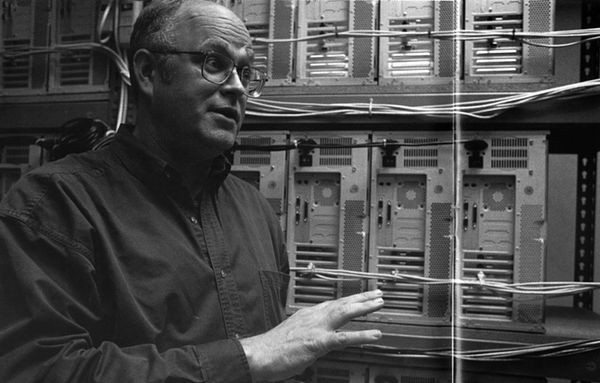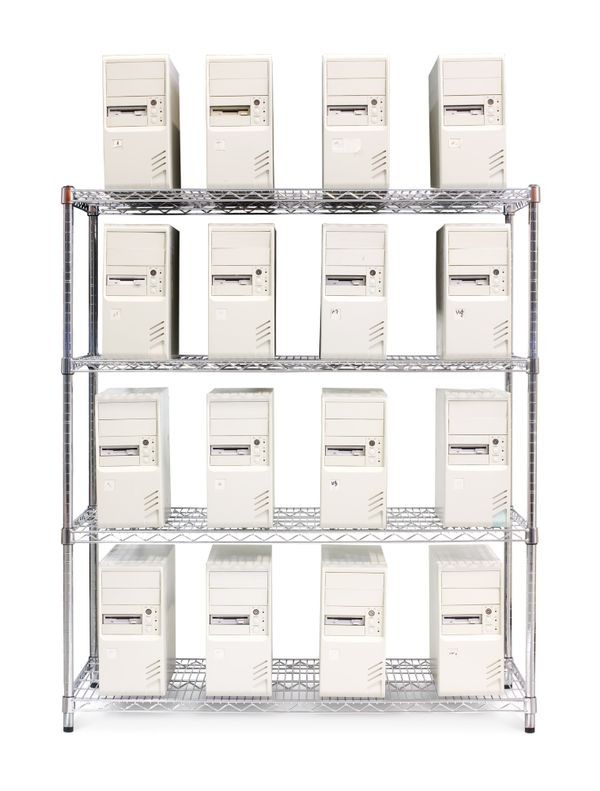Broadening the Supercomputer Market
Beowulf pioneer Thomas Sterling in front of Caltech’s Nægling
The Nægling (named after one of the swords used by the mythical Scandinavian hero Beowulf) had 120 processors and was used for teaching students about parallel computing.
Broadening the Supercomputer Market
Early supercomputing required super dollars. Systems were custom designed and vastly expensive. But as off-the-shelf hardware became more powerful in the 1990s, it was possible to imagine a supercomputer using mass-market hardware.
The Beowulf project did more than imagine it. In 1994, experiments began to use a cluster of PCs running open source software such as the Linux operating system.
Tackling such real-world scientific problems as astrophysical simulations of supernovas, or the gravitational interaction of subatomic particles, Beowulf often equaled the performance of costly systems at a fraction of the price.
Early Beowulf cluster
Beowulf clusters are powerful yet inexpensive supercomputers made with off-the-shelf technologies like PCs, Ethernet cards and the Linux operating system. First built and named by Thomas Sterling and Donald Becker, their simple assembly makes them popular in research and educational institutions.
View Artifact Detail
